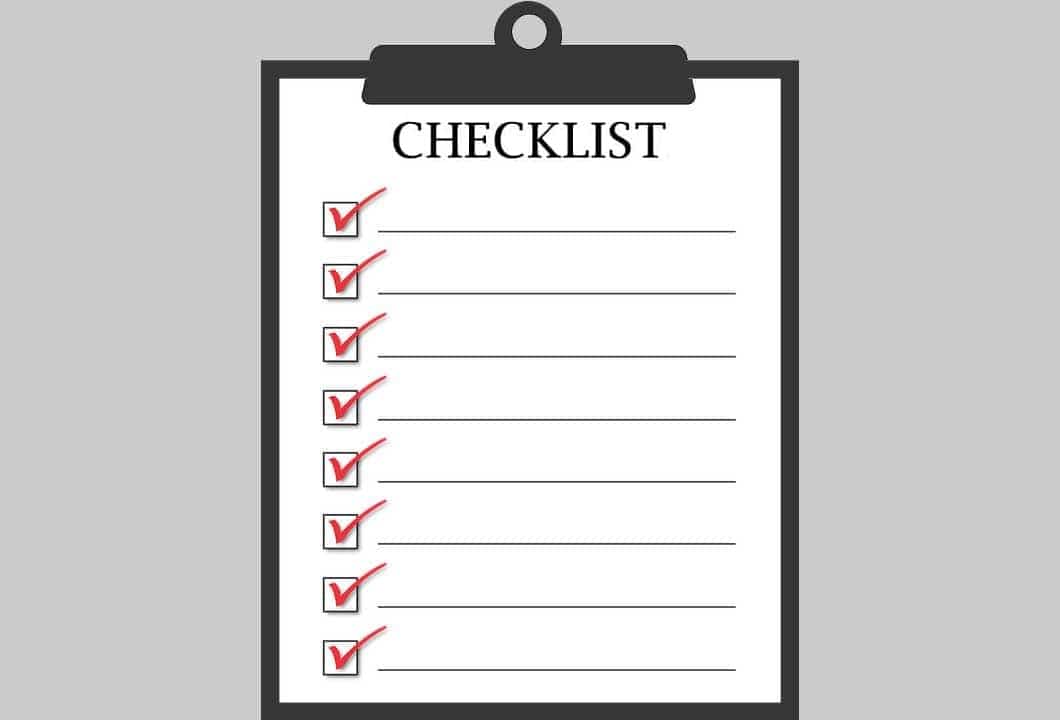Wanting to do everything in time and do it in the best way, we turn into a squirrel in a wheel. But, if it fails, there is stress, a feeling that you cannot control your own life. In fact, the solution to this problem is ingenious in its simplicity and lies in effective time management and creating checklists. Moreover, you do not have to attend expensive time management training. You can help yourself by creating a to-do list, as some people call it.
We may tackle a lot about the importance of checklists and how they simplify lives for people and businesses. But!
Why is it needed, and how to write it correctly?
The checklist should be realistically feasible.
Write anything and as much as you want on paper. But ask yourself how realistic it is to have time to do all these things. An honest answer about your readiness to get down to business right away can help you assess the situation. If it is negative, then it is not a matter for one day, and its implementation should be broken down into several subsections and stretched a little over time.
The same applies to the quantitative component of your tasks. What’s more important is not to confuse your daily to-do list with your global goals. These are different concepts. For visualization and motivation, you can and should record your aspirations on paper, but this should be done separately. So, remember to keep your career checklists separate from the Halloween party list, for example.

Formulations should be clear.
When making a list of urgent matters, be careful about the words and expressions you choose for this. They should motivate to action. The brain subconsciously reads this – you start to act faster and more willingly. For this, it is best to use specific active verbs. For example, “it’s worth buying office supplies” will be much less motivating than “go to the store for office supplies.”
Determine whether your case answers the question “what to do?”. If the answer is positive, then you are on the right track.
Points should be divided by importance.
A simple abstract list of points can only give you an idea of the future volume of work, but nothing more. Therefore, it is crucial to think over not only what you will need to do but also how you are going to do it. To do this, write out cases of primary importance in the first positions. If necessary, break them into subsections. Those tasks that are not urgent can be put at the end of the list. If you are a businessperson or extremely busy, we recommend that you use a rather scrupulous system that will specifically match your needs.
Count the time to solve tasks
At first, you may not even have a good idea of how many minutes or hours are needed to do a particular task. This can provoke confusion. But that’s perfectly fine when you’re just starting to plan. Don’t be afraid to give an approximate time. Depending on the experience of going through the lists, you will begin to better feel both time and yourself in it, and you will also learn to prescribe your time guidelines more realistically. And it is also important to try to stick to the established framework, not allowing the emotions of the moment to “postpone for later” take over.
Approach the list from a position of flexibility
This is especially important for those who are prone to perfectionism. Such people try to follow the list steadfastly, and any deviation from the chosen vector begins to seem to them the collapse of the entire idea of time management. Therefore, it is imperative to realize that it will not always be possible to do everything flawlessly, even if you really want to.
There is a factor of randomness that can destroy all plans. You should not blame yourself for this. Just continue on your way. Write a new list for the next day and prioritize based on the circumstances that have arisen. Remember that the task of the list is not to limit you to a strict framework but to teach you to use time wisely.
For those who consider lists to be a waste of time or a bore, we would like to state some strong arguments. So, lists are needed to:
Reduce anxiety
How many times have you repeated, “I have a million things to do, how do I manage it all?!” A checklist will help get rid of this senseless spell and reduce panic. Acting consistently, step by step, you will cope with a seemingly impossible pile of things and reduce the level of stress.

Not forget anything
The brain engages memory much more efficiently by focusing on a clear system. It doesn’t matter if you’re planning a vacation or preparing for an important project: if you write a list, thinking in detail about all the steps that will help you complete the task, you will feel ready to solve it.
Prioritize
Consistently making your list ensures that you focus on the most important things without being tempted to start with the easier things to do. A nice bonus: later on, you will find that there will be more time in your productive schedule to manage to do the things you enjoy.
Coordinate tasks
Do not forget that every time you start a new task and switch to something else, you spend additional minutes. Save time by completing blocks of similar tasks: make all calls, answer all emails, pay all bills, etc. What remains unfinished at the end of the day can be carried over to tomorrow when you sort out the unfinished items.
Track progress
Crossing out all completed tasks or putting ticks next to them, you will feel a strange sense of fulfilled duty and joy. Remember it, and next time mentioning it will inspire you to implement things from the list and help support motivation.
Wrapping up
For those who still haven’t opted to follow checklists, we define the main advantages of doing so:
- You improve your productivity
- Your things are well-organized
- You and your employees are motivated
- Your creativity can be boosted
- You follow strict priorities and are able to delegate tasks
- Fewer mistakes (even doctors follow surgical checklists)
Don’t hold back, and make the most of your life by starting to create topical checklists for yourself and your team!